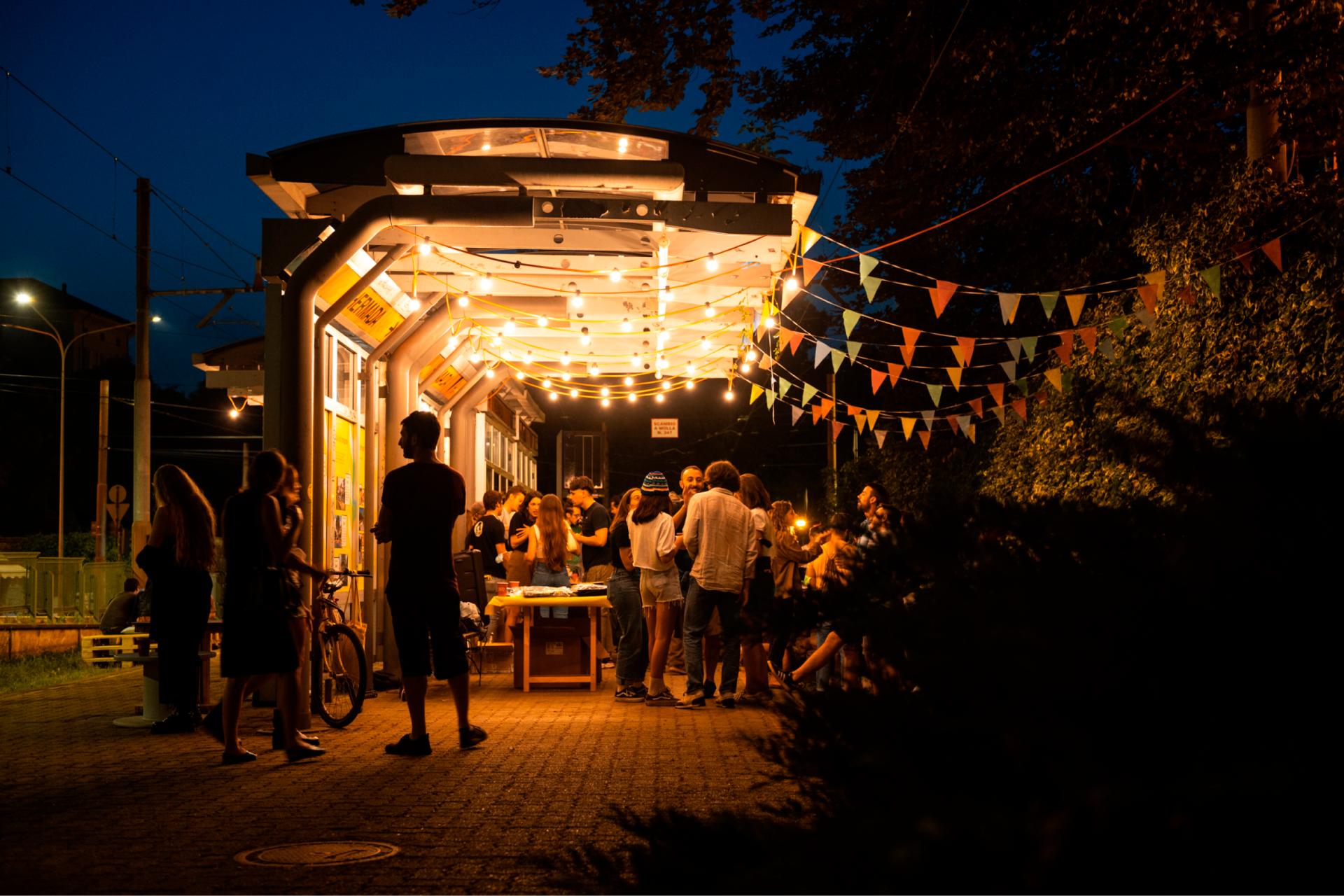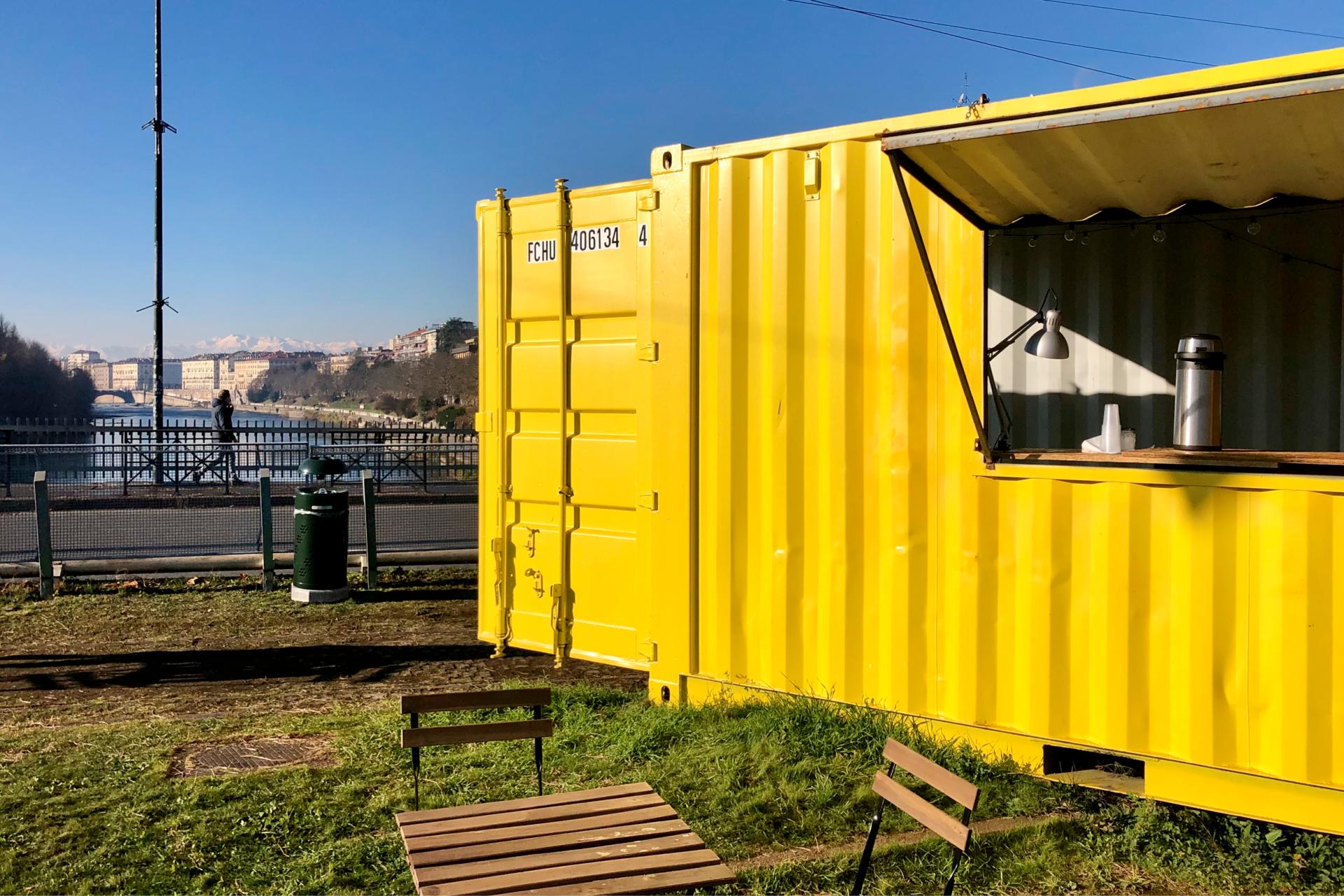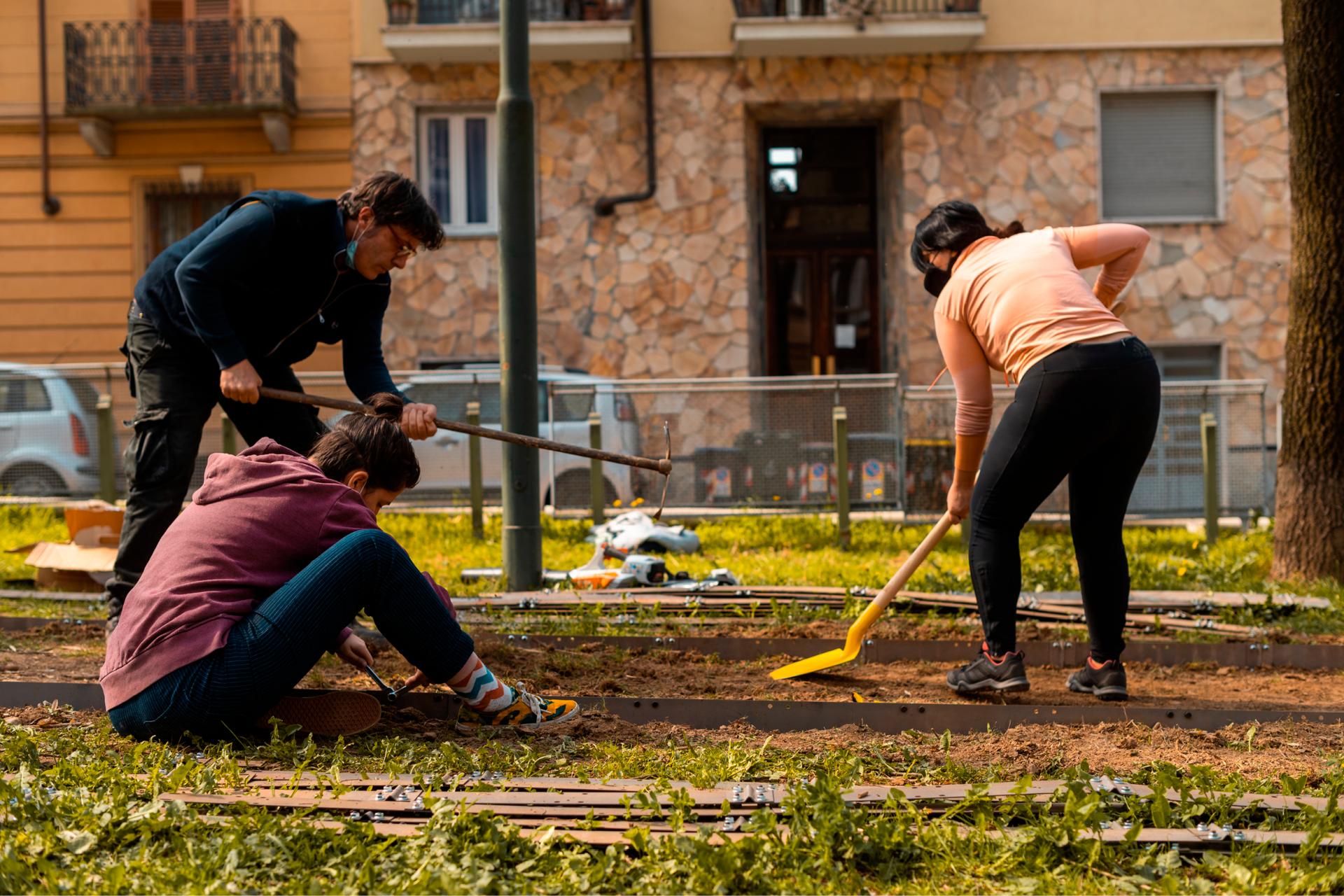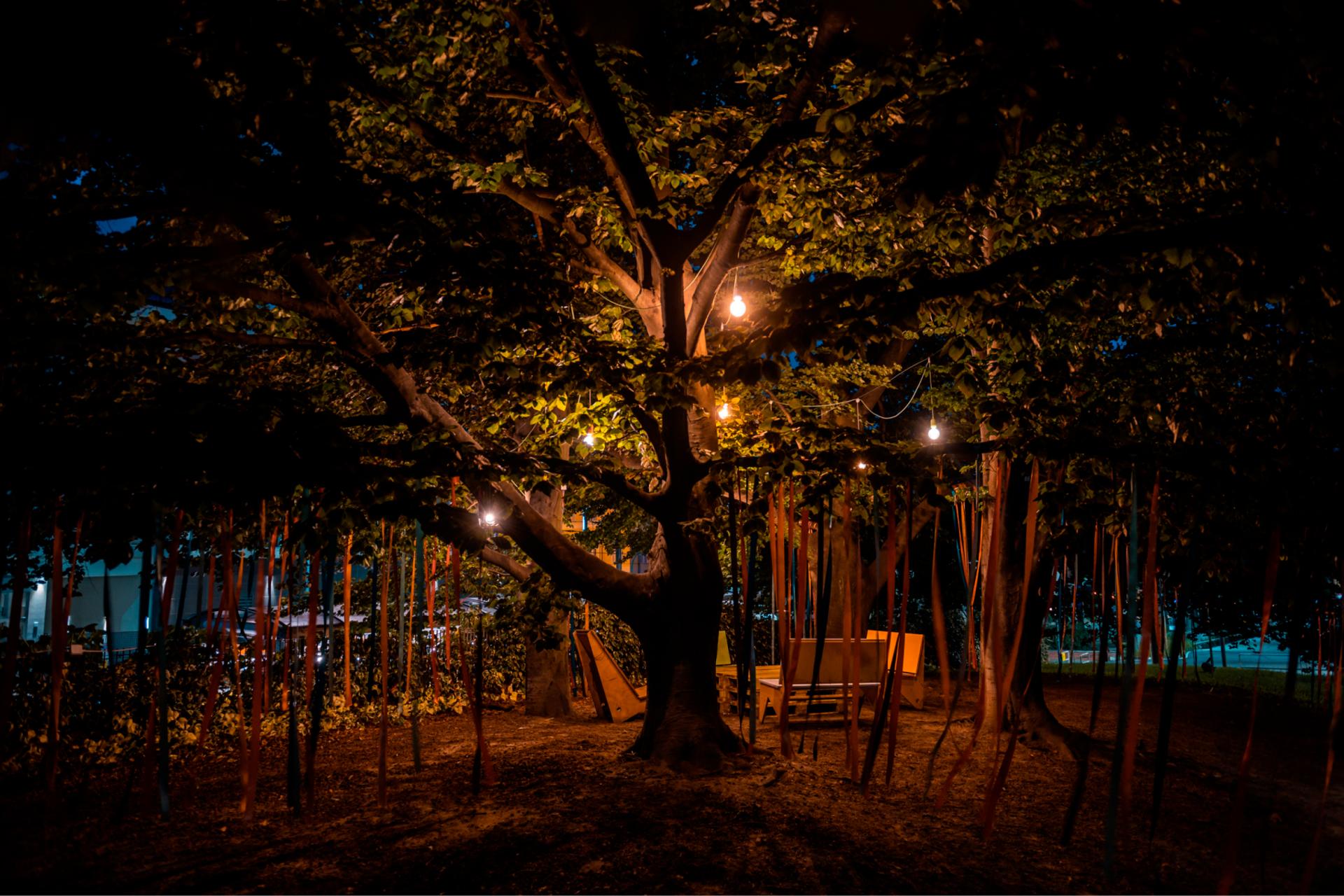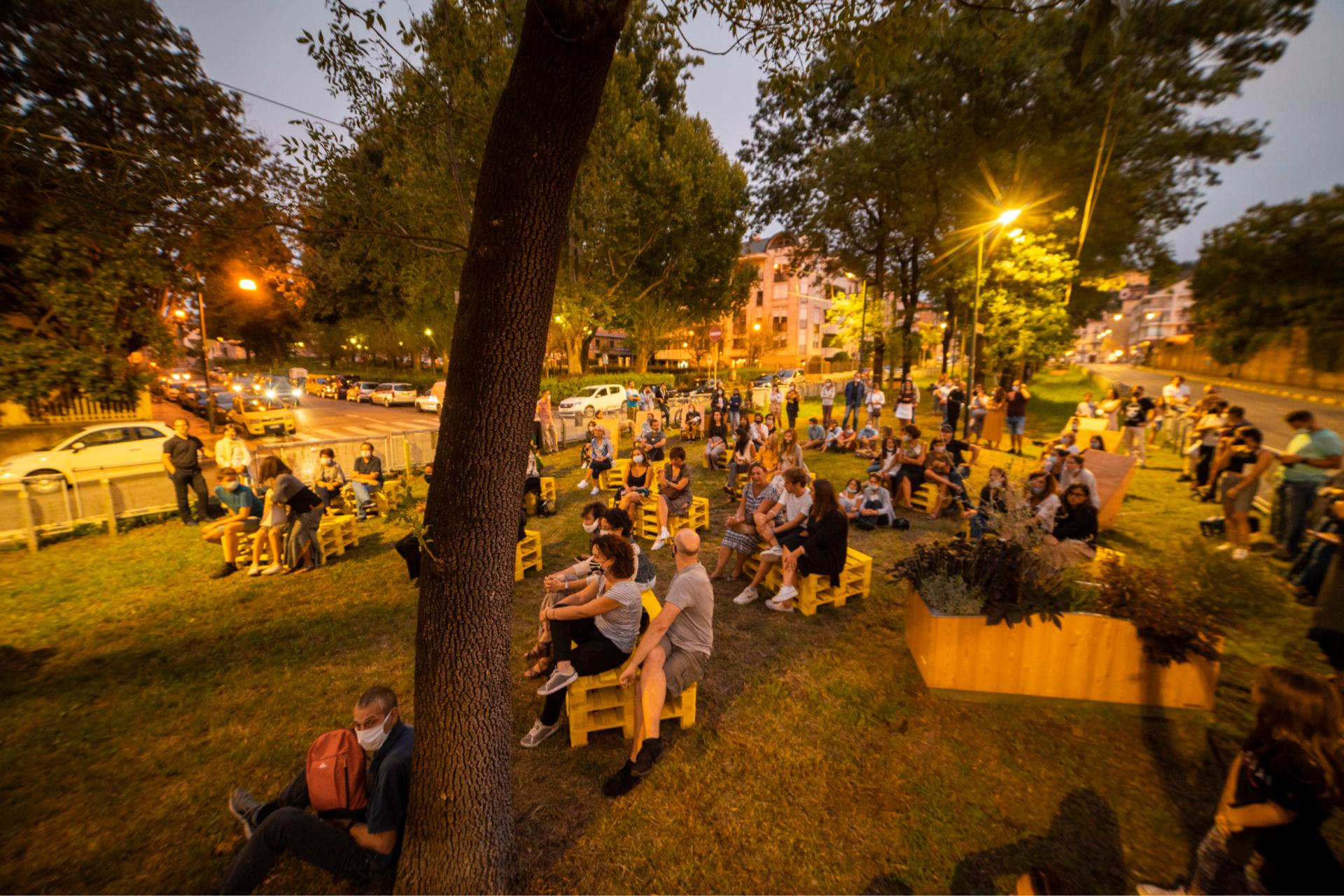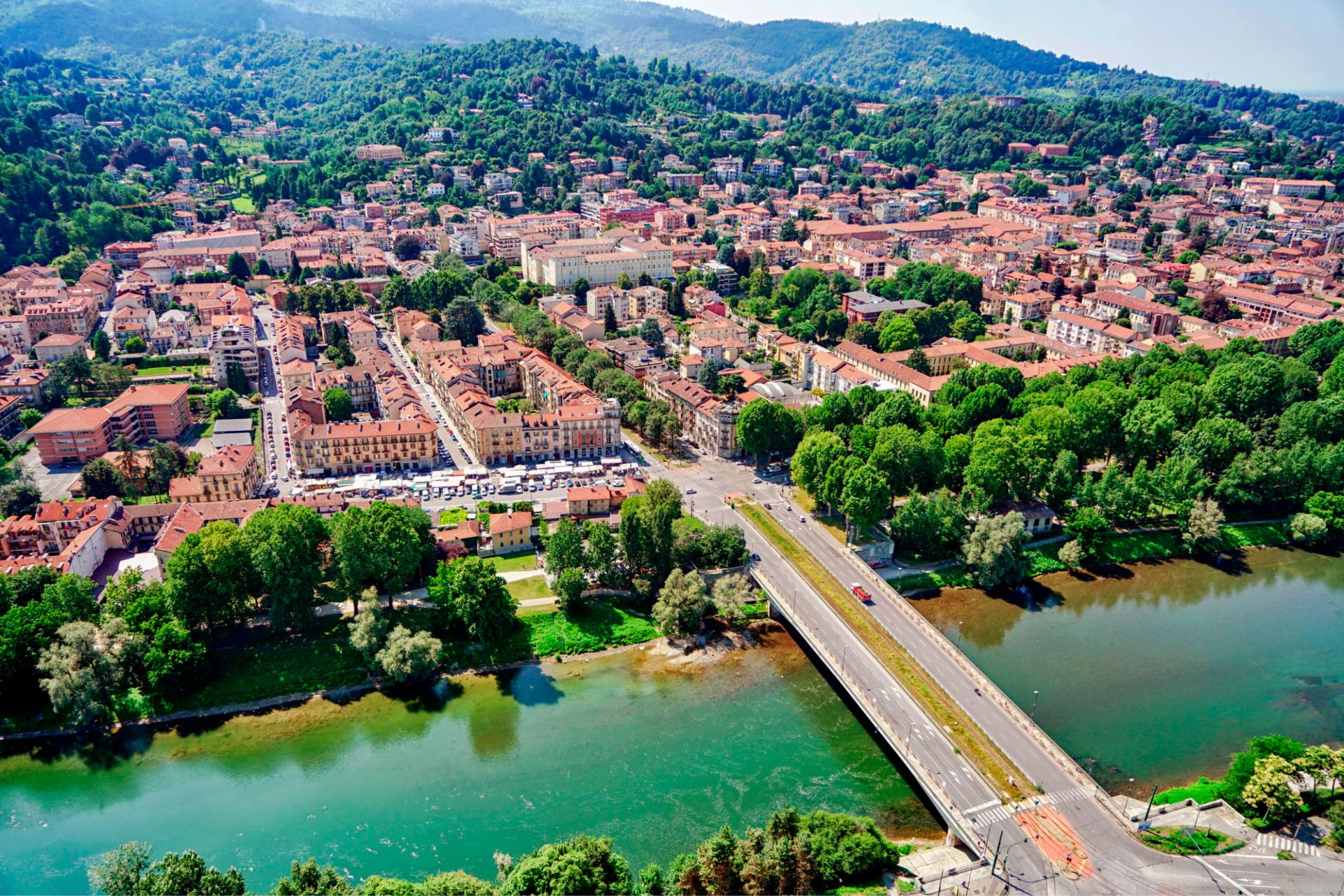Precollinear Park
Basic information
Project Title
Category
Project Description
Precollinear Park: a Turin-based placemaking project transforming a former tramway bed into an urban linear park ー a new community hub as a response to Covid-19. The project was born out of participatory planning and generated a community of over 100 volunteers that develop and upkeep the reconquered public space. Furnished with reused co-designed materials, it has become a focal point for the local community, hosting gatherings, cultural events and even lessons partnering with nearby schools.
Geographical Scope
Project Region
Urban or rural issues
Physical or other transformations
EU Programme or fund
Which funds
Description of the project
Summary
Precollinear Park is the first urban linear park in Turin, Italy. Stretching for over 800-metres, the park is structured on a disregarded portion of the city, divided in two by an old and unused tramline. This new green public space, by opening up the enclosures set up for the previous infrastructure, unites four bordering districts generating both a common public area and a swifter crossing route. The project was initiated by the local non-profit Torino Stratosferica and supported through a crowdfunding campaign, open calls and private donations. The Park was inaugurated on June 20th 2020, a strong response to a general post-lockdown need for public space and the association’s desire to act on the city in a meaningful and positive way. Since then, huge leaps forward have been made. An over 100-member strong volunteer team was established later that year which was key to the many transformations implemented since and still is today, meeting every Saturday morning to upkeep and enhance the project. In the same period the Park, originally stretching on just Gabetti avenue, extended on Regina Margherita bridge creating a new landmark area with a great view on the river and the surrounding hills. Working with the volunteers, Torino Stratosferica was able to gradually add: the iconic container-info point, the open air exhibition area, the gravel walkway, the bookcrossing, the enclosed dog area, and numerous new flowerbeds and pieces of urban furniture. A rich cultural event program, which spans over 2020, 2021 and 2022, gave new life to this urban area contributing to the creation of a new community strongly linked to the space. A new meaning for this once urban void, a new sense of belonging for a community working together for a collective urban regeneration.
Key objectives for sustainability
Sustainability and Circularity are main assets of Precollinear Park. The project’s commitment to environmental sustainability is mostly based on its main goal: the adaptive reuse of an abandoned infrastructure to transform it into a new collective space, focused on urban ecology, participatory planning and accessible culture. Furthermore, the choice of reclaimed materials and organic solutions in the development of the project accompanied the whole process: local schools, residents, and business owners collaborated for the construction of the Park’s urban furniture, under the guidance of a local workshop, reusing scrap wooden elements. Sustainably-sourced tropical timber, obtained through an international partnership, is the material of choice for our upgrades - providing a showcase of its capabilities as an eco-friendly and resilient option. In addition, a new waterline was installed to allow the care of plants and flowers and a draining gravel walkway to enhance the Park’s resilience.
Biodiversity increase is another goal achieved by the project. The planting of carefully selected new species of plants and flowers transformed the area into a more welcoming environment for pollinating insects, as well as being another main topic for open-air lessons. This green space aims to help the conservation of local biodiversity and increase air quality.
Moreover, the involvement of the local community for the constructive phases of the project – such as the local crafts, botanists and plant nurseries – and the use of reclaimed materials activated new circular micro-economies for the area with a twofold aim: igniting a stronger solidarity network and generating an educative example for the community focused on reuse and recycle, like the several workshops about these topics organised with local schools or the Park caretaking activities. The project has therefore become a showcase of good practices for the entire city.
Key objectives for aesthetics and quality
Precollinear Park is exemplary for the definition of new beautiful: sustainable, accessible, intracultural, intergenerational; a contemporary aesthetic based on the principles of reuse, adaptation and socio-economic inclusivity.
The project’s goal in terms of aesthetics is mostly based on the development of an experiential environment, where the “spirit” of the place expresses itself generating a new sense of belonging for very different people according to the culture, social background and ages.
The iconic bright-yellow container, the branded wayfindings, the dynamic soundscape from the calmer parts to the more chaotic ones, the new plantings and the new furniture collaborate in conceiving the Park as a unique beautiful and sensorial experience.
Bright-yellow is Torino Stratosferica’s colour, which really ties the Park together and contributes to the place branding and awareness of the project by the local community: yellow is the most visible colour from a distance and Precollinear Park’s signs immediately provoked reactions from the locals once installed.
Precollinear Park speaks therefore first and foremost to the eyes, and by doing so it develops a completely new storytelling of the place. The involvement of art and creativity is in fact an asset of the project, which could be identified as a unique continuous green exhibition space: the exhibition space on the bridge, the tram platforms turned into artistic billboards and the possibility to spread installation everywhere in the Park are exemplary for this goal.
In Precollinear Park beauty is therefore turned into a medium to bring a sense of belonging to the place between different individuals, where diversity, inclusion and intergenerational meet each other in creativity, which becomes the driving force to revitalise the whole area through the participatory processes and collective use of Precollinear Park: the perfect match between beauty and functionality.
Key objectives for inclusion
Inclusiveness and citizen engagement are milestones of Precollinear Park, which is a project looking to return the sense of belonging to a place through collective involvement, local engagement and intergenerational exchanges.
Indeed, Precollinear Park starts its life with the shared processes of the so-called Visioning sessions: focus groups with the city's creative community where imagining and designing new visions for several neglected spaces of the city. Between these visions, the idea of Precollinear Park was identified.
After the area was targeted, the local community was activated, the launch event and the cultural program were organised and immediately turned the Park into a strong community, not just of Volunteers, but of local residents, business owners and stakeholders. The creatives, citizens, volunteers, local artisans became in fact the actual actors of the project and public participation the main driving force of the whole Park.
The most important goal achieved was the creation of a real, organic and strong bond between the community and the space. The Volunteers meet each other every Saturday morning for the maintenance of the Park, local citizens use the space as the enlargement of their houses for children parties or relaxing moments, while the surrounding schools invade the park everyday for eating or organising outdoor classes.
Moreover, this place became a symbol of inclusion during the pandemic, reducing inequality. In fact, despite the lockdown, since volunteering is an activity allowed by law, we were able to continue with the collective work of managing the Park. This was a moment of real intergenerational inclusion and collaboration between different communities.
Results in relation to category
Precollinear Park generated several direct and indirect impacts related to citizen engagement, community building and regeneration of a built environment.
The results achieved by the project can be divided in three main categories:
- Social results: the project directly involved and empowered a multicultural group of local residents, national & international students, business owners and stakeholders. The Park’s space has then been taken as a stage for open-air lessons with young students, exhibitions by local artists, small concerts and book presentations, and simply as a dining area for local school children.
- Environmental impacts: Precollinear Park’s main result is based on its identity of being an adaptive reuse of 6.000 m2 of neglected urban space. The development of a new public green space on an abandoned tramway infrastructure. With the maintenance of regenerated green areas came the creation of new gathering spaces, new street furniture made by recycled materials, planting of greenery and flowers to increase biodiversity, and installation of new garbage collectors. Furthermore, the choice of reclaimed materials and organic solutions, the attempt to increase biodiversity and the activation of new circular micro-economies mitigated Precollinear Park’s environmental impact, in addition to the educational value of the several activities regarding the environmental sustainability of the project.
- Economic impact: the project’s solidarity network activated new connections between the Park’s community and the local activities, also thanks to the Park’s new communal spaces, such as the Arena or Piazza Hermada often used to eat outside food bought from nearby stores.
Precollinear Park also resulted as an experiment about the economic sustainability of a placemaking project, powered by the inclusive network of local, national and international stakeholders towards innovative resourcing strategies between public, private and civil society partnerships.
How Citizens benefit
The Park is a multifunctional space that blends civic engagement strategies in order to maintain and upkeep the public green space while promoting various activities for the benefit of the community.
The project was immediately conceived as a collective process with the involvement of different stakeholders, from the public and private sector and from the civil society. The citizen’s involvement was decisive in the start-up phase. The positive response from residents and people around the city to Torino Stratosferica’s proposals was key to moving forward. The support from City administrators and Councillors also facilitated the participation of local businesses and schools in the creation of the first activities, namely urban gardening and self-construction workshops or open-air book presentations during the lockdown periods of the pandemic.
In parallel, over 100 volunteers of heterogeneous backgrounds and ages gathered every week to take care of the Park. While public activities and events were mainly orchestrated by the organisation, the overall development of the Park was the outcome of a series of round tables among the volunteers and open to everyone. In this form of co-design people benefited from the opportunity to take part in the transformation of their neighbourhoods, highlighting their desires and proposing solutions to overcome the criticalities of the area. This had a two-fold impact: an increased sense of belonging and community that in the long term has built an attachment to a once-neglected territory; an enhanced sense of civic duty, with the promotion of collective care practices of a common good.
Other direct benefits of this transformation include the availability of a new communal space for culture and open-air education; a new panoramic viewpoint of the city on the Park’s bridge; the possibility to move by foot across 4 different neighbourhoods with new access points on the former tramway infrastructure.
Physical or other transformations
Innovative character
The innovative features of Precollinear Park are mainly related to the bottom-up and collective processes of the initiative:
- The conceptualisation of the project developed through an unorthodox approach based on a series of focus groups (the so-called Visioning Sessions) in which the area and the future vision for it have been identified, according to the desires of citizens and proponents of the creative community.
- The community engagement through a preliminary participatory phase based on a series of focus groups carried on with citizens, youths and local creative industries to identify and highlight criticalities and potentialities of the place. This collaborative process ignited the start of the physical project, sponsored by the association through a crowdfunding initiative.
- The involvement of the community during the operative phase through self-building workshops involving citizens, a dedicated group of volunteers, students from all ages, local craft and universities.
- The reclaiming of an abandoned infrastructure to transform it into a beautiful common space focusing on ecology and accessible culture. The birth of such an important, bottom-up regenerative project exemplifies an innovative approach to the use of neglected public space for Turin: the possibility for a non-profit institution to upkeep a public area enables citizens to benefit from a once-abandoned and inaccessible area, now turned into a public park.
- The economic sustainability of the project developed through Torino Stratosferica’s ability to create an inclusive network of local, national and international stakeholders which led to innovative resourcing strategies towards public, private and civil society partnerships.
- The social impact, which triggered positive intergenerational exchanges because the Park’s community involved people from all countries, cultures and ages – with a special focus on local elder and young people.
Learning transferred to other parties
Precollinear Park is a site specific project, but its principles and methods are prototypes able to be transferred to other contexts – either urban or rural.
The project is based on two main principles. Firstly, the commitment to environmental sustainability through the reuse of neglected infrastructures, the choice of reclaimed or organic materials and the regreening of cities – such as a railway track transformed into a public park.
Secondly, the will to infuse a new sense of belonging to the space through an inclusive approach based on community and local craft involvement, activating circular microeconomies and a new pride of belonging to the space.
Furthermore, Precollinear Park experimented new methods of community making stimulating the cure of public space mostly based on three phases:
- The Visioning sessions developed through the shared processes of focus groups with the creative community of the city, in which we collectively imagine new visions for several neglected spaces of Turin. Once the final collective vision is defined for a specific area, the local community is activated.
- The renovation of the neglected space: People involved become the actual actors of the project. Visioning sessions and community gatherings contribute to the co-design of the project, while local citizens and volunteers participate in the cleaning, maintenance and building of the Park, supported by local experts. The self-building of the transformation is carried out through collective workshops to foster local engagement and intergenerational exchanges.
- The activation phase where the sense of belonging to a community increases thanks to events and activities attracting residents. This phase has been crucial for the activation of the space and the connection with the other networks of the city: during the last two years, many collaborations with city’s actors and stakeholders have been activated for the social and economic sustainability of the project.

